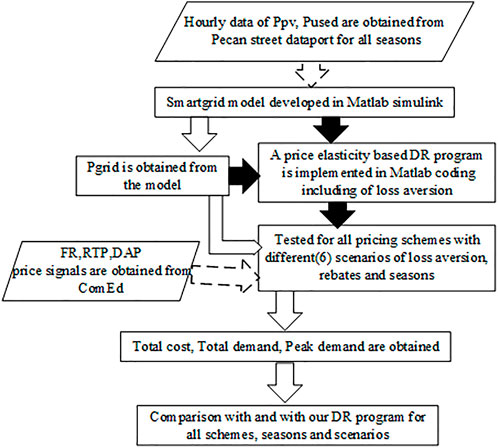Report on Energy Star Program and Its Role in Sustainable Development Goals (SDGs)
Introduction
The Energy Star program, established in 1992 by the U.S. Environmental Protection Agency (EPA), is a voluntary labeling initiative aimed at promoting energy-efficient appliances. This program plays a critical role in advancing multiple Sustainable Development Goals (SDGs), particularly SDG 7 (Affordable and Clean Energy), SDG 12 (Responsible Consumption and Production), and SDG 13 (Climate Action).
Impact of the Energy Star Program
- Energy Savings and Cost Reduction: Energy Star-certified appliances help households save an average of $450 annually on utility bills, contributing to SDG 7 by promoting affordable and clean energy usage.
- Environmental Benefits: Since its inception, the program has helped prevent approximately 4 billion metric tons of greenhouse gas emissions, directly supporting SDG 13 by mitigating climate change.
- Consumer Awareness: Approximately 90% of households recognize the Energy Star symbol, which guides consumers toward sustainable consumption patterns in line with SDG 12.
How the Energy Star Program Operates
- Voluntary Labeling: The EPA sets energy efficiency standards for various appliances. Manufacturers that meet or exceed these standards receive the Energy Star certification.
- Incentives for Manufacturers and Consumers: State and local utility rebate programs, along with federal tax incentives, are often linked to Energy Star qualifications, encouraging the production and purchase of energy-efficient products.
- Specification Criteria: The program evaluates appliances based on energy consumption during operation and standby modes, ensuring minimum efficiency ratings are met.
Potential Challenges if Energy Star is Discontinued
The EPA has announced a reorganization plan that may eliminate the Energy Star offices, raising concerns about the program’s future. The discontinuation of Energy Star could impact SDGs by:
- Reducing Consumer Accessibility: Without the Energy Star label, consumers would find it more difficult to identify energy-efficient appliances, potentially decreasing the adoption of sustainable products.
- Increasing Complexity in Product Evaluation: Shoppers would need to analyze detailed product specifications such as energy consumption, water usage, and efficiency ratings, which may deter energy-conscious purchasing decisions.
- Lowering Incentive Program Effectiveness: Utility rebate and tax incentive programs would need to develop new criteria for qualifying appliances, possibly complicating the promotion of energy-efficient technologies.
Expert Insights on the Importance of Energy Star
- Elizabeth Hewitt, Associate Professor: Emphasizes that without Energy Star, consumers must become “savvy shoppers” to identify energy-efficient products, increasing the burden on individuals.
- Ben Stapleton, Executive Director, U.S. Green Building Council California: Highlights that reliance on manufacturers’ specifications without a unified certification could reduce consumer prioritization of energy efficiency.
- Mark Kresowik, Senior Policy Director, American Council for an Energy-Efficient Economy: Notes that utilities would need to establish alternative standards for incentive programs, possibly turning to organizations like the Consortium for Energy Efficiency.
Recommendations for Consumers and Stakeholders
- Utilize Independent Reviews: Consumers can refer to organizations such as Consumer Reports for appliance performance information, although some content may require a subscription.
- Monitor Alternative Standards: The Consortium for Energy Efficiency provides energy-efficiency standards that could serve as a basis for future incentive programs.
- Advocate for Program Continuity: Stakeholders should engage with policymakers to emphasize the importance of Energy Star in achieving SDGs related to energy efficiency and climate action.
Conclusion
The Energy Star program significantly contributes to the achievement of Sustainable Development Goals by promoting energy-efficient appliances that reduce greenhouse gas emissions and support responsible consumption. The potential elimination of the program poses challenges to consumer accessibility, incentive programs, and overall progress toward SDGs 7, 12, and 13. Continued support and adaptation of energy-efficiency standards are essential to maintain momentum in sustainable development.
1. Sustainable Development Goals (SDGs) Addressed or Connected
- SDG 7: Affordable and Clean Energy
- The article discusses energy-efficient appliances and the Energy Star program, which promotes the use of appliances that consume less energy, contributing to affordable and clean energy usage.
- SDG 12: Responsible Consumption and Production
- The Energy Star program encourages consumers to choose energy-efficient products, promoting sustainable consumption patterns.
- SDG 13: Climate Action
- The article highlights that Energy Star appliances have helped prevent 4 billion metric tons of greenhouse gas emissions, directly addressing climate change mitigation.
2. Specific Targets Under Those SDGs Identified
- SDG 7: Affordable and Clean Energy
- Target 7.3: By 2030, double the global rate of improvement in energy efficiency.
- SDG 12: Responsible Consumption and Production
- Target 12.2: By 2030, achieve the sustainable management and efficient use of natural resources.
- Target 12.8: By 2030, ensure that people everywhere have the relevant information and awareness for sustainable development and lifestyles in harmony with nature.
- SDG 13: Climate Action
- Target 13.2: Integrate climate change measures into national policies, strategies, and planning.
3. Indicators Mentioned or Implied to Measure Progress
- Energy Savings and Cost Reduction
- The article states that Energy Star appliances save households an average of $450 a year on utility bills, implying the use of cost savings as an indicator of energy efficiency impact.
- Greenhouse Gas Emissions Reduction
- The prevention of 4 billion metric tons of greenhouse gas emissions is a key indicator of progress towards climate action targets.
- Consumer Awareness and Adoption
- About 90% of households recognize the Energy Star symbol, indicating high consumer awareness, which can be used as an indicator for Target 12.8.
- Energy Efficiency Standards Compliance
- Product specifications such as energy consumption in different modes, efficiency ratings, and inclusion of low-power modes serve as technical indicators for measuring appliance energy efficiency.
4. Table of SDGs, Targets, and Indicators
| SDGs | Targets | Indicators |
|---|---|---|
| SDG 7: Affordable and Clean Energy | Target 7.3: Double the global rate of improvement in energy efficiency by 2030. |
|
| SDG 12: Responsible Consumption and Production |
|
|
| SDG 13: Climate Action | Target 13.2: Integrate climate change measures into national policies and planning. |
|
Source: chicago.suntimes.com







